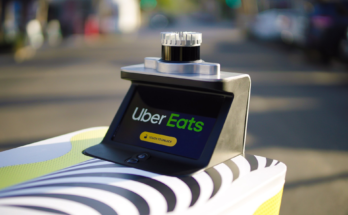
However you feel about road trips—whether you rack up the mileage on the regular or are still working through the trauma of family vacations that forced you to pack into a station wagon for hours on end—they are the new normal during the COVID-19 pandemic.
The number of Americas traveling by air is way down, and that’s not likely to change any time soon: The American Automobile Association (aka AAA) predicts that 80% of fall travel will be road trips, and the upcoming holiday season will likely bring even more traffic.
While it’s great that so many people have that option, we also can’t forget that we’re still in the midst of a global pandemic. No matter how tired we are of all the extra precautions, this is absolutely not the time to let your guard down. Road trips are no exception.
Pandemic or not, we should always to head into a road trip willing to be flexible, but also highly prepared. (It’s a fine line.) This travel mentality has never been more important or relevant than it is now. We’ve previously covered how to plan a (before-times) road trip, so if you’re looking for general information and tips for maps, apps and other tools, start there. Here, we’re going to focus on how to plan and take a socially distant pandemic road trip. Squirt on some hand sanitizer and buckle up.
G/O Media may get a commission
The basics
At this point, we shouldn’t have to tell you to keep up with all your usual COVID public health strategies—like mask-wearing, social distancing and frequent hand-washing/sanitizing—while on the road. Please, be a decent person and do what you need to do to keep yourself and others safe.
What to bring
At the very least, you’re going to want to pack a few face masks, some hand sanitizer, disinfecting wipes (or another way of cleaning surfaces) and a decent supply of food and beverages (to minimize the number of times you have to stop).
So far, I’ve taken one road trip during COVID, and put together my own ultra deluxe travel kit featuring all of the above, plus: a small container of liquid hand soap (if a rest stop doesn’t have any and I want to wash my hands with actual soap and water), a roll of toilet paper (always a good idea, but also prevents you from having to ask your stall neighbor if they could spare a square, and useful if you’re passing through an area with no indoor bathroom options), a keychain stylus/door opener (if there’s an opportunity not to touch door handles and buttons, I’m going for it) and a fanny pack (so I wouldn’t have to hang a bag—or worse, put it on the floor—at a rest stop).
Do you really need all of these things? Probably not. But with the exception of the extra toilet paper, I used all of them.
Plan your stops
One of the best parts of a pre-pandemic road trip was pulling off the highway without a plan and seeing what type of food options and attractions you could find. Now, that’s not the best idea. First of all, as the CDC explains: “Making stops along the way for gas, food, or bathroom breaks can put you and your traveling companions in close contact with other people and frequently-touched surfaces.”
As fun as it is to wing it, you should plan at least some of your stops ahead of time, and fortunately, there are plenty of new and existing apps to make this easier. First, there’s a map from AAA that provides updated information on state and regional travel restrictions. We’re also fans of this interactive map of rest stops—especially since several have closed during the pandemic.
And you’re going to want to download Nexit, if you haven’t already; it will guide you towards the best exits along your route, with additional information on specifics like where to find vegan food and the local hotels and motels that are pet-friendly.
Gas stations
Stopping for gas is an unavoidable part of road trips, even now. You may not love the idea of coming in contact with all those high-touch surfaces, but it’s all part of it (unless you’re traveling through New Jersey). Anyway, the CDC’s gas station COVID safety tips aren’t surprising, but bear mentioning:
- Use disinfecting wipes on handles and buttons at the gas pumps before you touch them (if available).
- After fueling, use a hand sanitizer with at least 60% alcohol. When you get to your destination, wash your hands with soap and water for at least 20 seconds.
Bathrooms and rest stops
Again, the usual COVID rules apply here. Per the CDC:
- Wash your hands with soap and water for at least 20 seconds after using the bathroom and after you have been in a public place.
- If soap and water are not available, use a hand sanitizer that contains at least 60% alcohol. Cover all surfaces of your hands and rub them together until they feel dry.
For what it’s worth, every time I stopped somewhere to use the restroom during my road trip, I was always the only person in there and everything looked—and smelled—as though it had recently been sanitized.
Food
Your best bet here—according to the CDC for health reasons, and my mother for cost-saving reasons—is to bring your own food. If you forget, or it’s not an option, the CDC recommends using drive-through, delivery, take-out, and curb-side pick-up options. And, of course, wash and sanitize your hands thoroughly before eating anything.
Keep a mask handy in the car
After you’ve been driving for hours, you may be so relieved to get out of your vehicle that you forget to put your mask on before getting gas, visiting a rest stop, or going through a drive-thru. To avoid this, keep your mask somewhere in your car that is visible and convenient. This could mean hanging it from the rearview mirror, or the lever on the side of the steering wheel that controls the windshield wipers. You could also have a designated “car mask” that’s always there when you need it, just as a backup.



